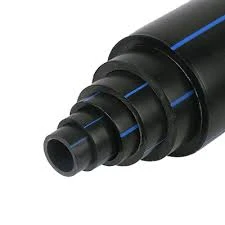Nov . 21, 2024 11:17 Back to list
hdpe pipe fittings
Understanding HDPE Pipe Fittings Essential Components for Modern Infrastructure
High-Density Polyethylene (HDPE) pipe fittings play a pivotal role in numerous industrial applications, from municipal water supply systems to agricultural irrigation and construction projects. Known for their durability, flexibility, and resistance to corrosive materials, HDPE fittings are increasingly becoming the preferred choice over traditional piping materials. This article delves into the significance of HDPE pipe fittings, their advantages, applications, and considerations for use.
What are HDPE Pipe Fittings?
HDPE pipe fittings are components designed to join, terminate, or change the direction of HDPE pipes. They come in various shapes, including elbows, tees, reducers, and flanges. Designed to connect pipes of different diameters and accommodate bends and curves in a piping system, these fittings are crucial in ensuring seamless flow and efficient operation.
Advantages of HDPE Pipe Fittings
1. Durability HDPE materials possess high tensile strength and are resistant to impact, making them less likely to break or deform under pressure. This durability extends the lifespan of the piping system, reducing the need for frequent replacements.
2. Corrosion Resistance Unlike metal fittings, HDPE is resistant to rust, corrosion, and microbial growth. This characteristic is particularly advantageous in water supply applications, as it helps maintain water quality by preventing contamination.
3. Chemical Resistance HDPE fittings can withstand exposure to various chemicals, making them ideal for use in industrial applications where fluids may be aggressive or reactive.
4. Lightweight and Easy to Install Compared to metal fittings, HDPE fittings are significantly lighter, facilitating easier handling and installation. This quality can reduce labor costs and installation time, leading to overall project savings.
5. Flexibility HDPE pipes and fittings can be easily molded into different shapes, allowing for adaptability in complex layouts. This flexibility is essential when working around obstacles or in uneven terrains.
6. Cost-Effectiveness Although the initial investment might be higher than traditional materials, the durability and longevity of HDPE fittings often lead to lower long-term costs. Additionally, their resistance to maintenance and replacement contributes to overall savings.
Applications of HDPE Pipe Fittings
HDPE fittings are widely used across various sectors
hdpe pipe fittings

- Water and Wastewater Management In municipal water supply systems, HDPE fittings ensure reliable transport of drinking water while maintaining water quality and safety. They are also used in sewage systems due to their resistance to corrosion and chemical damage.
- Irrigation Systems Agricultural applications benefit from HDPE fittings as they can efficiently supply water to crops. Their resilience to UV radiation and flexibility makes them suitable for varied irrigation designs.
- Industrial Processes Many manufacturing and processing plants use HDPE fittings for fluid transportation due to their ability to handle a wide range of chemicals safely.
- Mining and Drilling In extractive industries, HDPE fittings are used in pipelines that transport slurries and harsh chemicals, owing to their robust characteristics.
Considerations When Choosing HDPE Pipe Fittings
When selecting HDPE pipe fittings, several factors should be considered
- Pressure Ratings Ensure that the fittings are rated for the pressure of the system to prevent failures or leaks.
- Compatibility Verify that the fittings are compatible with the specific type of HDPE pipe being used, considering factors such as diameters and intended application.
- Jointing Methods Understand the different methods of joining HDPE fittings with pipes, including butt fusion, electrofusion, and mechanical connections, to ensure a secure and leak-proof assembly.
- Regulatory Standards Check compliance with local and international standards for materials used in drinking water systems and other applications.
Conclusion
HDPE pipe fittings represent a significant advancement in piping technology, offering a range of benefits that make them suitable for various applications. Their durability, chemical resistance, and ease of installation contribute to their popularity across industries. As infrastructure needs evolve, HDPE fittings will continue to play a critical role in ensuring efficient and reliable fluid transportation systems, ultimately supporting the development of modern infrastructure. By understanding their characteristics and applications, stakeholders can make informed decisions that enhance the design and execution of their projects.
-
High-Quality PPR Pipes and Fittings Durable ERA PPR & PVC PPR Solutions
NewsJul.08,2025
-
Black HDPE Cutting Board - Durable, Non-Porous & Food Safe HDPE Plastic Cutting Board
NewsJul.08,2025
-
High-Quality CPVC Panel Durable HDPE & PVC Panels Supplier
NewsJul.08,2025
-
Double PE Welding Rod Supplier - High Strength, Durable & Versatile Welding Solutions
NewsJul.07,2025
-
High-Quality PVC-O Pipe Supplier Durable 75mm PVC Pipe & Connections Leading PVC Pipe Company
NewsJul.07,2025
-
HDPE Drainage Pipe Supplier – Durable & Corrosion-Resistant Solutions
NewsJul.06,2025

